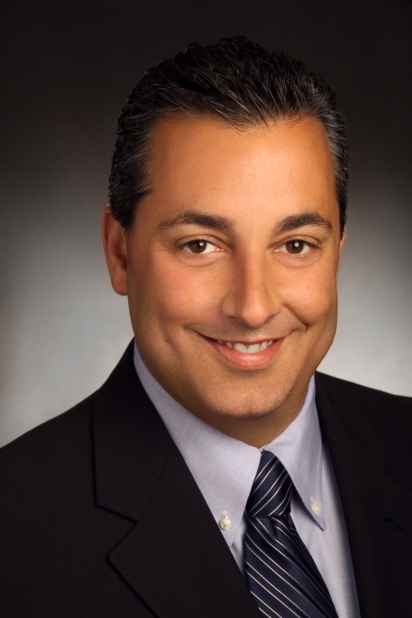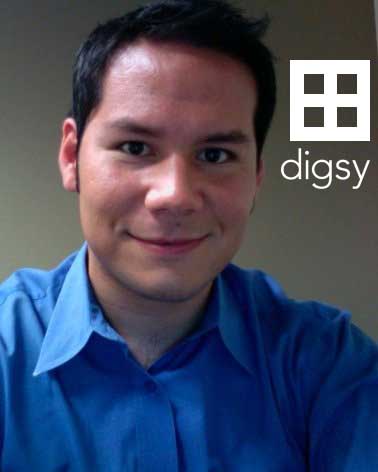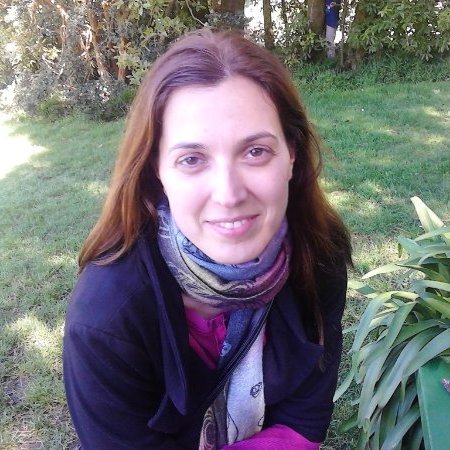Tim Fernihough is Myplanet’s best kept secret. A startup co-founder, engineer, and natural born leader, he’s one of those quiet guys doesn’t just carry a big stick – he’s the guy dragging the whole tree around by its roots. His passion and commitment to building high quality products is evident in everything that he does. If you’ve ever met Tim, you know exactly what I’m talking about. If you haven’t had the privilege yet, here’s Tim’s interview to get you up to speed.

What kind of job did you think you’d end up in while you were completing your Computer Science degree at the University of Western Ontario? Did you ever think you’d end up as a startup founder?
Well, to be honest – computer science was an after thought for me. When graduating high school and trying to decide what I was going to do for university – I intentionally decided against Computer Science. I had been a computer guy for years, and by then already figured that if I went to school for Comp Sci and hated it, I’d be destroying both a career path and a hobby. For that reason, I decided on my second favourite thing (Newtonian Mechanics) and thanks to a fascination with bridges, I placed my bets on Civil/ Structural Engineering.
By the time I was in 3rd year, I had become a partner with in database development company called Databaces. At that point, I figured it would only make sense to get the Comp Sci degree too, and Western had some ways to get both degrees in 5 years. I had to give up the remaining summers to catch up on what I was missing.
To answer your original question, I had no idea in the first few years that I’d even end up down the software development route so no, I didn’t think of it at all. I started working for Myplanet as a contractor in 2007 when the company was just one guy (the original founder) and at that point I didn’t even think of myself as a founder. When we rebranded the original business in 2009 is when I really realized I had founded anything at all. To me, I had always just been doing whatever needed to be done.
You’re currently in training to become the CIO at Myplanet. What’s that like and what do you think it takes to be a successful CIO at any organization?
At first it was scary because Myplanet has grown so quickly and to aspire to fill any senior role in a company likes ours, especially one in the C-suite, is intimidating and comes with a lot of accountability. Myplanet does not yet have C-level management and instead has a team of directors that represent the same decision makers occupying the C-suite in larger organizations. As the primary decision maker for all IT initiatives in the organization, I am aspiring to fill the shoes of CIO in the next couple of years as the company continues to grow and our corporate structure matures, or I will be properly equipped to work well with the person who is in that role.
I think to be successful in general you need to accept that you’ll never stop learning. You will never know everything and you need to continually grow. It’s hard to compact this into a sentence or two, but I think to be successful in a leadership role of a growing company, you need to recognize how important alignment is between your particular company focus area and the larger goals of the enterprise is. In my particular situation, IT can do many things but understanding the larger strategy of the organization is a necessary first step to ensure that IT can move the company in the right direction towards their goals.
Finally, you need to recognize that the people in your organization are by far your greatest asset. I believe in building a team of high performing, highly empathetic individuals who are proud of what they do and who they are. I want them to have opportunities to work on solving interesting problems, grow both personally and professionally, and to make a difference with the work they do.
When you’ve got the entire weight of the business on your shoulders – how do you manage stress?
Well, I think it’s important to recognize the contribution of your colleagues. You need to not be afraid to ask for help, especially when you’re someone who has historically exhibited a strong work ethic. When I was younger, I felt it was a sign of weakness to ask for help but when growing a business, you’ll find that your colleagues (if the company has hired the right people) will be more than happy to help you.
I find that stress is best managed through balance. I keep separate cell phones for work and personal. Aside from the rare “work from home day”, I reserve working from home for critical issues only and try to never work on weekends (after working a 50-55 hour work week, I deserve my rest). I recharge my batteries often and take my vacations rather than let them build up. While I will always be flexible for the business and move things around when I can, I rarely outright compromise my personal activities.
I will always do a bang up job no matter where I work, whether I am an owner or not, but I am working to live, not living to work.
What’s your approach to building great software?
Myplanet has developed a well-tested approach that we use on all of our projects but I’ve come to believe heavily in the underlying principles as a general approach for any problems in life. More available here if you’re interested.
You need to first validate your ideas and ensure you’re soliciting input from the right people. Start with a hypothesis about the opportunity or problem and be prepared to ask “why?” Rapidly validate (or invalidate) true demand for an idea with users and stakeholders, continuously defining our product in terms of actual user goals. I would say do not underestimate the value of involving the representative users of your software early and ongoing. Too many companies fail to deliver great software because they don’t end up building what the users want or need. Then go deeper, model and test potential executions to solve for the problem. Narrow the range of options – be ok with broad brush strokes.
Then develop rapidly towards a full solution: build only what’s needed for validation at ever-increasing levels of fidelity. This is where the application of Scrum or other agile frameworks really helps. Eventually, you can extend the solution by exploring new opportunities and enhancing the idea.
What’s in store for Myplanet in 2015?
Prior to 2014 we had always had a vision that was similar to “we build web and mobile products”. While that says what we do, it doesn’t really tell a story about how we are different from any other company that does the same thing.
Myplanet had originally defined its 2014 vision as “we build products that connect people”. We started building our own product surrounding this vision as well as working with a lot of telecommunications companies because we saw a large opportunity to make a difference. Our vision became somewhat more updated to “we make every day experiences more enjoyable” over the course of the year but going into 2015 it has been distilled into “we re-energize the way people connect in the workplace”. This allowed us to keep the core tenets of the vision as we’ve had it in 2014.
2015 is going to be a year of moderate growth as we work to focus on our teams and to further build our competencies across our existing offices and remote workers. We will also see some considerable growth in our first ever product – Relay Robin – which is a video-conferencing-as-a-service software solution that is deployed alongside conventional enterprise video conferencing hardware/software to provide more user friendly interfaces and functions. It is expected a considerable amount of growth we see in the next year or two will be based on the successes seen by Relay Robin.
You’re responsible for all of the hiring at Myplanet, with 80 employees to date between all 4 offices, how do you spot, develop, and manage great talent?
In our early days, I was responsible for all first round technical interviewing and vetting of candidates. In recent times, my involvement has also been in training other individuals at the company to conduct these first interviews as it is not a scalable practice if only I can do them.
Spotting great talent is more than just being able to see that someone’s technical skills align with the skill set required for a particular job. I often try to push candidates outside their comfort zone to see how they handle solving problems they’ve not faced before. At the end of the day, though I care about the technical solution they employ, I equally care about how well they operated under those conditions. Did they keep a cool and calm demeanour? Did they panic or were they able to put problem solving to work for their benefit? This can be indicative of how they may handle real problems in the workplace.
I also do what we call an initial “culture fit” with the candidates. I assess whether or not they’ll gel well with potential teams, and if I could see myself just as easily sitting down with this person to solve a problem together as I could having a drink with them. Teams are the most cohesive when everybody is on the same page. Understanding a persons affinity for other people will help determine which team they might be a best fit for, or if perhaps we need to keep looking for other candidates.
In terms of developing and managing great talent, you simply have to ensure you empower those people to be and do their best. From an IT perspective, that means things like ensuring they always have the most updated technical tools and quick resolution for issues that may impede their productivity.
Of course, we need to pay above market rate so that salary is never a concern and to ensure that the culture is enticing. More on that in the culture question. ☺
What’s the toughest part about your job?
The toughest part about my job is knowing when to let go of something. This isn’t just because I’ve been a one man IT team for years but as a co-founder, I wore many hats since the beginning. As we’ve grown our company and hired on people with specific skill sets, I’ve had to package up certain initiatives or portfolios and pass those off to those people. It’s tough when you’ve been responsible for something for so long and you’ve given it your personal loving touch. You want to know if that person is going to give it the same care, diligence and attention to detail that you did. In the end, you have to learn to trust because you can’t do everything.
I routinely am faced with delegation of initiatives or responsibilities that were once my daily operations. I’ve gotten a lot better at it not being a painful process but it’s still tough and hard to do.
What/ who do you attribute your success to?
I feel like I’m about to say an Oscar speech here, in a sense. I have to originally give credit to my parents to instilling good values and morals in me, such as integrity, perseverance and honesty. I can also thank certain friends that I may have griped to at one point or another who gave me pep talks.
I have to give credit to a couple of my directors for acknowledging my continuing interest in making a difference in the growth trajectory of the company and always advocating for my career path. Making allies in your career is important and you’ll make some great friends along the way.
But most importantly, I attribute my success to my own actions. I know that sounds egotistical but it’s the truth. Any successful entrepreneur has to push themselves beyond their comfort level and their limits over and over again. You have to fall down, fail but not be afraid to get back up. I have always believed in being proud of what I produce, being proud of my interactions with people, learning from my mistakes and doing a good job. I always put people first and work feverishly to improve the experience of all those I work with. Nobody loves criticism but when it’s appropriate for me to receive some, I do my best to learn from it and grow.
At the end of the day, the greatest disservice you can do to yourself is to undervalue your worth or to fail to recognize your own role in making your successes happen.
What’s the company culture at Myplanet like, and what kind of things do you guys do to grow and maintain this culture?
At Myplanet, we believe “culture” is more than just a word thrown on at the end of a list of incentives of why you should work for us instead of another technology company. For something to really be “culture”, it needs to be lived and breathed in all aspects of the organization. We have 5 values at Myplanet, and if at any time a decision is made that appears to contradict those values, employees are encouraged to speak up through a variety of avenues. Our 5 values are Focus, Mastery, Innovation, Collaboration and Humanity. We keep these values in mind with all strategic decisions made in the company and have many ways to solicit input from the great minds throughout the rest of the organization.
We’ve grown quickly from 4 people in 2009 to around 80 at the end of 2014 (though we had a peak of about 100). We have always tried to put people first but we had some difficulties in 2014 that made it difficulty to focus on training and other initiatives. Moving into 2015, we are ensuring we do right by our people and are investing in almost nothing else for the next 6 months. This is a commitment to show that our people are our greatest assets. This isn’t trivial by any means either – we’ve strategically decided that certain other goals in the business are important but not more important than our folks.
Of course, we have the foosball tables, yoga and meditation, movie nights, Myplanet swag, RockBand and other games, beer taps and Myplanet sponsored event nights that are awesome perks but in all honesty – the salary I make and the perks I get aren’t enough to keep me working at a company if the organization itself isn’t really living up to it’s externally marketed values.
What’s your secret to successful project management when building software?
A plan is almost always wrong the moment your pen leaves the paper. Frameworks like Scrum provide great methods and artefacts that you can use to keep your project trucking along week by week but you need to inject a little bit of reality sometimes. Though Scrum has ways of handling things like rushed timelines, vacation and unexpected sick days – it doesn’t really take into account things such as dwindling motivation, being burnt out, or coping with the super speed growth of an organization. This is where good managers come in; those who are people persons.
There are many times in my past couple of years due to the resourcing situation in the company at the time and the timelines we were faced with meeting on certain projects; where I have been faced with team morale issues. To some degree, a good manager needs to recognize when a team simply can’t continue at the pace they’re working at and to proactively take that into consideration when conversing with stakeholders – but you need to show people they are appreciated and that they aren’t just workhorses. People will go a lot further and more out of their way for someone they respect and trust who is in the trenches with them, rather than the manager that just informs the team they need to work the weekend to get something done. At Myplanet, we all embody the idea of “we succeed as a team and we fail as a team”.









